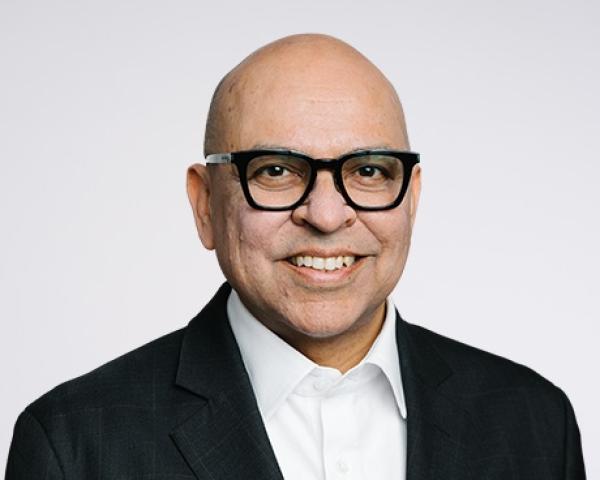Gaurav Garg, partner and global head of property & casualty insurance at Oliver Wyman, recently sat down with ITL Editor-in-Chief Paul Carroll to talk about the state of digital transformation, now that the insurance industry has been tackling the issue for years. He says many businesses have moved through the first stage, in which paper-based processes are digitized. They are now in the second phase, where they are working to use data more effectively to drive decisions—the rush toward using generative AI is part of this phase. Garg says the third phase will come as businesses emulate social media engines that “allow almost instantaneous dissemination of data, instant consumption of data and instant access to data.” Get ready for your smart assistant.
Insurance Thought Leadership:
You’ve been involved in the digitization and transformation of insurance for a long time. Let me start by asking you for an overview of where things have gone over the last few years and where you think we can get in the next few. Then, we’ll dig deeper.
Gaurav Garg:
Digital technology disruption has been discussed within the insurance industry for over a decade. In the last two to three years, events have made it a business necessity, not just something that is good to have.
COVID forced companies to think of ways to connect with all their stakeholders — employees, distribution partners and clients. The supply chain has been disrupted, first because of COVID and now because of the war in Ukraine. There has been a kind of trade war, or at least significant friction, developing among some bigger economies. In addition, in recent years we’ve seen a surge in catastrophe-related losses (CAT-losses). And the talent shortage is a big issue, especially in insurance.
Companies are focused not just on digital connectivity but on efficiency.
Insurance Thought Leadership:
That’s a great start. Would you say a bit more about what you mean by digital disruption?
Gaurav Garg:
Over the last several years, companies have focused on what I call CI and CX — customer interface and customer experience. The front-end seems to be getting the most attention in terms of creating a digital experience. Not many companies are disrupting the way they work internally.
A truly digital insurance company has digitized all aspects of its business, entwined across the value chain.
Insurance Thought Leadership:
You talk about the three stages of innovation. Would you explain that a bit?
Gaurav Garg:
The first is what I call the foundation phase. You can’t build a truly digital company if you have a lot of manual processes. So, companies need to institute things like robotic process automation and the digitization of payments and cash management. Get rid of paper. Maybe start on machine learning. These efforts won’t be fully integrated with the enterprise, but they’re a start.
In the second phase, you start adding data-driven outcomes, data-driven decision-making, data-driven underwriting. You go toward straight-through processing [STP] on underwriting, on claims and on payments.
In retail insurance, let’s say you run 80% of everything through what we call the black box STP, and only 20% spits out as exceptions. Even there, you’re more efficient because that 20% takes advantage of the foundation pieces of digitization from the first phase.
This second phase is what most companies are building out now. One piece that is being developed rapidly is generative AI, which is transforming business. Everyone, including people who are not too conversant with computers, including people in my family, are using generative AI.
In the third phase, companies put themselves in a position similar to what you see in the social media world. These social media engines allow almost instantaneous dissemination of data, instant consumption of data and instant access to data.
Three things are holding insurance companies back. One is obviously regulation. Number two is privacy laws. And number three is the enabling technology. But I think all those issues will be solved. The laggard will be regulation, but there are already some “regulatory sandboxes,” including in Bermuda, where companies can start to experiment and innovate.
Insurance Thought Leadership:
I'm interested in exploring generative AI a bit. As someone who’s followed the technology world for 35 years now, I’m not sure I’ve ever seen anything catch on quite so fast, not even the internet. Would you please say a bit about what the actual uses are that are happening now and lay out a road map for what’s coming?
Gaurav Garg:
From what I’ve seen, working with several companies on this and with our own generative AI at Oliver Wyman, companies will start with a closed loop. They’ll use internal data to train the AI. Then they’ll move to an open loop, bringing in data from outside.
Many are starting with claims, where generative AI can assess what’s happening with policy conditions, deductibles and so forth and can measure and report on the outcomes. The same thing is starting with underwriting, where you consume a lot of external data and have to turn it into useful information.
Insurers, like all enterprises, will also use generative AI for other, general activities, such as research. If you look manually at earnings for companies in a sector where you might want to invest or want to know the state of a line of business in insurance, like D&O [Directors and Officers Insurance], that takes a long time. But generative AI can gather all that information within seconds. It’s not perfect yet, but you can add another layer of AI to screen for errors.
Finally, you have your day-to-day uses: Smart assistants, email management and other internal tools are popping up. All kinds of work will be taken over by generative AI.
Insurance Thought Leadership:
Lots of people talk about how generative AI lets people do things faster and more efficiently, but I was talking to someone the other day who said large language models like ChatGPT will also let companies do more things. For example, a state of the business report to a partner might take too long to justify if done manually, but ChatGPT could spit out a report in no time. Do you agree with her take on doing more things?
Gaurav Garg:
Yes, output will increase tremendously, because in a short time you can do much more. But this is going to throw out another new challenge: There's a limit to how much information humans can consume.
People will have to learn to use generative AI to provide precise answers to precise questions. Maybe you start out wondering what the rate environment is in commercial insurance, but then you have to be able to zero in on cyber insurance, say, and then to figure out how much of the rate increases relates to ransomware.
You also have to deal with the “hallucinations” that generative AI can produce. How do you create a reliable AI that doesn't need a second level of scrutiny?
I think we will get there very fast.
Insurance Thought Leadership:
I find it interesting when you talk about external versus internal data. At this point, generative AI basically consumes everything that’s out there, but I can imagine an insurance company, or any company, saying, “Okay, we're going to have an internal ChatGPT, and it's only going to have access to our policies, our data and so forth. And on that basis, we'll be much more comfortable with the accuracy than we would be if it just grabbed everything that was out there.” It sounds like you're seeing that possibility, as well.
Gaurav Garg:
Yes, certainly. One has to be extremely careful with the information about policyholders, but the technology will address that issue, as well.
In financial services, where I’ve worked for over 30 years, there is the concept of the maker and the checker. We might see that with generative AI: One layer of AI will be the maker and another the checker.
Insurance Thought Leadership:
What about other technologies that hold real potential for insurers?
Gaurav Garg:
IoT [the Internet of Things] will allow for connected homes, connected cars and so on, but is also a challenge, because all those connected devices present so many opportunities to hackers.
I see some companies now coming up with personal cyber. How do you make homes more secure? It could be disastrous if someone hacks into any of these home systems, with all the cameras and all the devices that control practically everything in my house.
A related area is sensors. A lot of things that were actually done on a manual basis, such as inspections, are now being done by sensor technology. Sensors also allow for more parametric insurance, not just by measuring rainfall or wind in natural catastrophes, but by measuring something like the water level in factories.
Drones are playing a big role, too, with things like roof inspections.
Another big one relates to the future of mobility, where Oliver Wyman has done significant work in our insurance and automotive practices. Two things are happening here:
As safety features keep getting better and as autonomous vehicles move toward full self-driving, the liability shifts from the driver to the technology, and what had previously been considered personal insurance becomes commercial insurance. Liability also shifts to the infrastructure, because the technology is reading the road signs. If the infrastructure gets messed up, who’s responsible in an accident?
The other part is the emergence of EVs [electric vehicles]. Safety features are making drivers safer, but if something happens, there is a much bigger loss because there are so many sensors to replace. If a pebble hits your windshield, you can’t just call a service and have it replaced at home. There are cameras and sensors in the windshield, the system has to be recalibrated… and the price of the repair doubles.
EVs also complicate things because the batteries have a life, whether that’s 10, 12 or 15 years, and the battery is the main component of the car. How do you insure the car as it is aging? In the financing world, some companies are leasing batteries separately. And you may wind up with a different battery in the car, because some companies are trying to save time for drivers — especially for truckers — by swapping in a fully charged battery rather than make people wait while their batteries recharge.
The future of mobility will have a huge impact on P&C insurance. And remember, auto insurance is the major chunk of P&C. How are companies preparing?
Insurance Thought Leadership:
That’s great. Any parting words?
Gaurav Garg:
I am personally of the opinion that companies that are fully committed to technological changes and that become fully digital will survive and thrive.
There is no other option but to meet the client and the market where they are, not where the company is. There are companies still on the periphery and still kind of wedded to a very traditionalist model. They will find life extremely difficult, because their customers will leave, their distribution will leave and their employees will leave.
But for anyone that can get past that traditionalist approach, this is a very exciting time.
Insurance Thought Leadership:
This was great. Thank you for your time, Gaurav.










